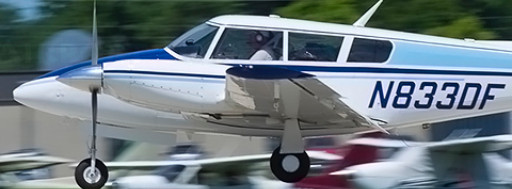Hey everyone,
Wanted to share this, particularly for single engine guys. Don’t do what I did here – I’ve learned to religiously believe DIFF and land soon after. My Decisions weren’t perfect, but I learned something and wanted to share it here.
if you see a diff there is a leak, then hot gases are in your cowl. Possibly of bigger concern for single engine guys is the potential for CO infiltration. I have a monitor looking too because I have a heater in the nose. I saw no indications, as I expected, even with a clear exhaust break (because the engines are outboard). Single engines might have a bigger issue.
Engine monitors tell the story immediately. Small diff (drop in EGT on one or two cylinders) is a crack; zero reading is a break.
History (you’d think I’d have learned): In 2022 I had an exhaust stack break on the left engine. It showed itself by dropping that one cylinder EGT to zero (#4) on the left side. I saw that leaving Pittsburgh and assumed the probe went bad, since that happened twice during installation of the system. I landed and found it had separated. I flew for over an hour with that break. The engine monitor was talking to me, but I rationalized it away on that flight.
Last Monday I moved out of the KILG TFR to summit airport on a Sunday, since you can’t get TSA to let you out on a day that our leader is leaving. I’d have to wait for him to be gone and the TFR to drop before I could go, which would make us late arriving in Georgia.
Deja Vu all over again. This time I saw a diff on the right side on takeoff, after clearing TSA and Secret Service. I kept going because landing would most likely ground me there and cancel this trip. The flight to Summit is less than 10 minutes, so I pressed on.
On the ground at Summit, an Inspection showed the EGT probe clamp had broken. This would be an easy fix, and a text to Paul found him available for re-installing the probe. I filed IFR out of the TFR to Delaware Airport, since we are outside the inner ring and security allows an immediate departure under an IFR flight plan.

I flew down to have Paul repair and inspect prior the exhaust system, and we both looked it over and were satisfied. I took off back to Summit, but noted that I still had a DIFF, though it was less. This time it was a 400F diff and not plain zero, which I attributed to a fouled or failed probe. Remember that we both inspected the pipes. I decided to continue.
Departing with my wife for Jekyll Island, I watched the DIFF hold steady all the way to a planned rest stop at KOAJ in North Carolina. We certainly could have continued to Jekyll in the air, but I definitely wanted another look before I landed on an island with no maintenance. There is also airline service home from Ellis Airport (KOAJ) if need be, so stopping here made sense.
Opening the cowl I found a clear break at the #2 cylinder. I found a clear separation on the right side #2 this time, so we found a mechanic and drove a rental car from there. We missed a hairline crack on the back side of that stack, or we focused on the probe and missed the break entirely. Either way – a missed opportunity.

We finally got a new part Thursday night and installed Friday. The mechanic down in North Carolina manhandled the pipe to make it fit. The result was inadequate clearance from the lower cowl and a crack on the old pipe. Further – there is now damage to the lower cowl.
This mechanic in North Caroline is a very nice man. He works incredibly hard, but was clearly no expert. He was not Paul, my PA30 Expert at PhillAir, Inc. Realizing this, I committed to a thorough post maintenance preflight and having an inspection done by Paul at home. * Paul had been helping over the phone through the entire process.
With the maintenance finally done around 2pm Saturday, we took off for an IMC flight in rain all the way home. I saw a 200F DIFF immediately on takeoff, so I knew right away there might still be a leak somewhere. Mind you, a visual inspection didn’t show anything, and I know I need to look more closely going forward.
I decided to proceed home on this 2 hour flight in light to moderate rain and IMC all the way. Landing at home in Wilmington, I found that a crack had developed on the wye attached to the same pipe that was installed. I grounded the airplane, and asked Paul to put me on his schedule for whenever. The airplane was home and I’d just have to cancel my next day appointment to replace my #2 radio.
Paul had a replacement exhaust system and all the parts I needed. He volunteered to come up Sunday so I could keep my avionics appointment, and I jumped at that offer. On Sunday, he removed the old pipes and we found that the parts were neither fitted nor installed correctly. The new pipe segment failed at the attach point to cylinder #2, which caused the EGT drop. There was also the crack at the wye on the other side and can be seen below. Finally – the new pipe made contact with my lower cowl and burned, bent, and cracked it.

Paul was very kind to come right up and fix my exhaust in my hangar – again. He got me going and I successfully moved the airplane to Lancaster Avionics.



Frank

